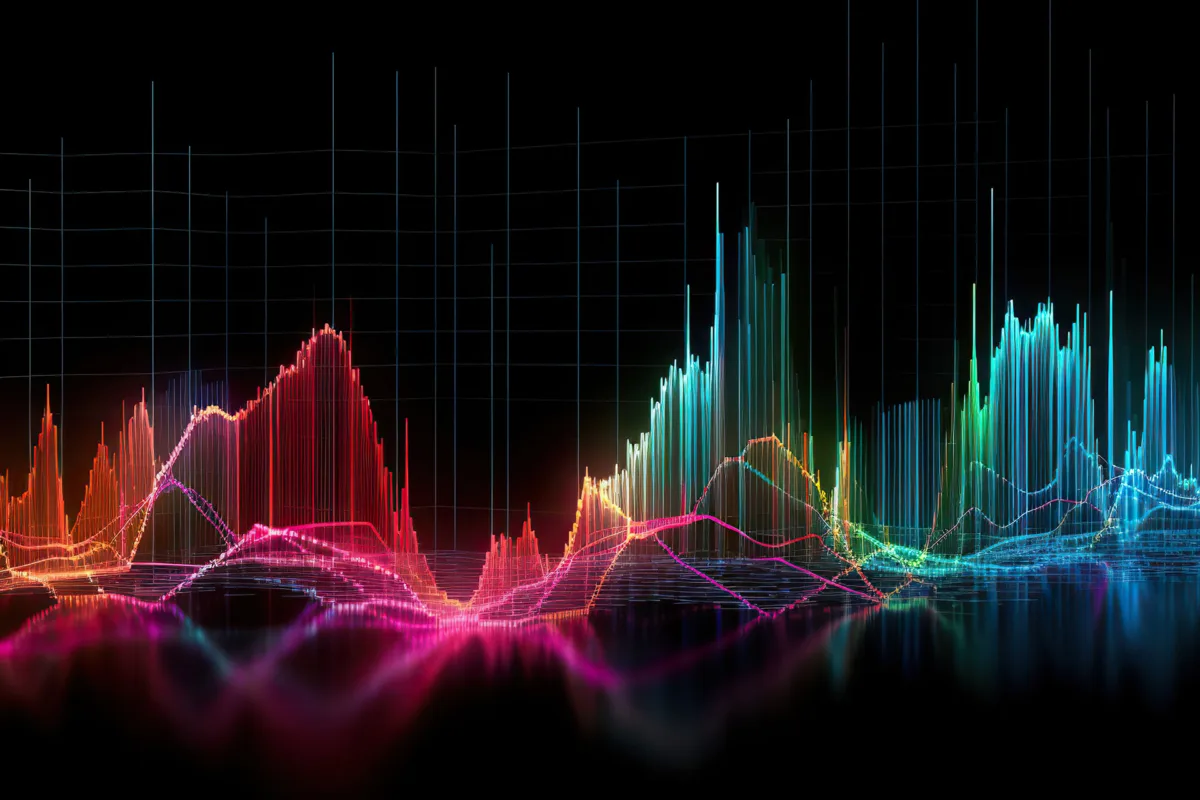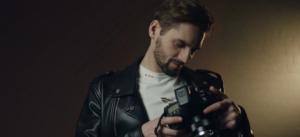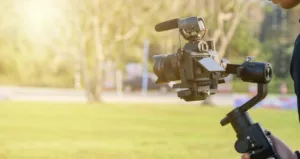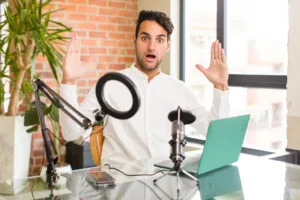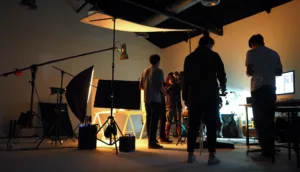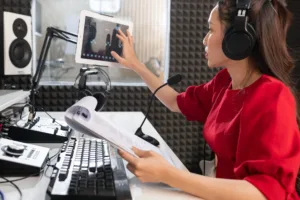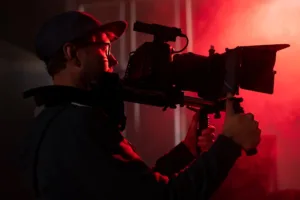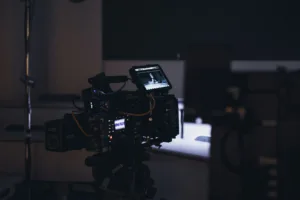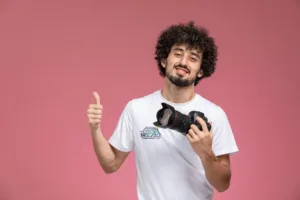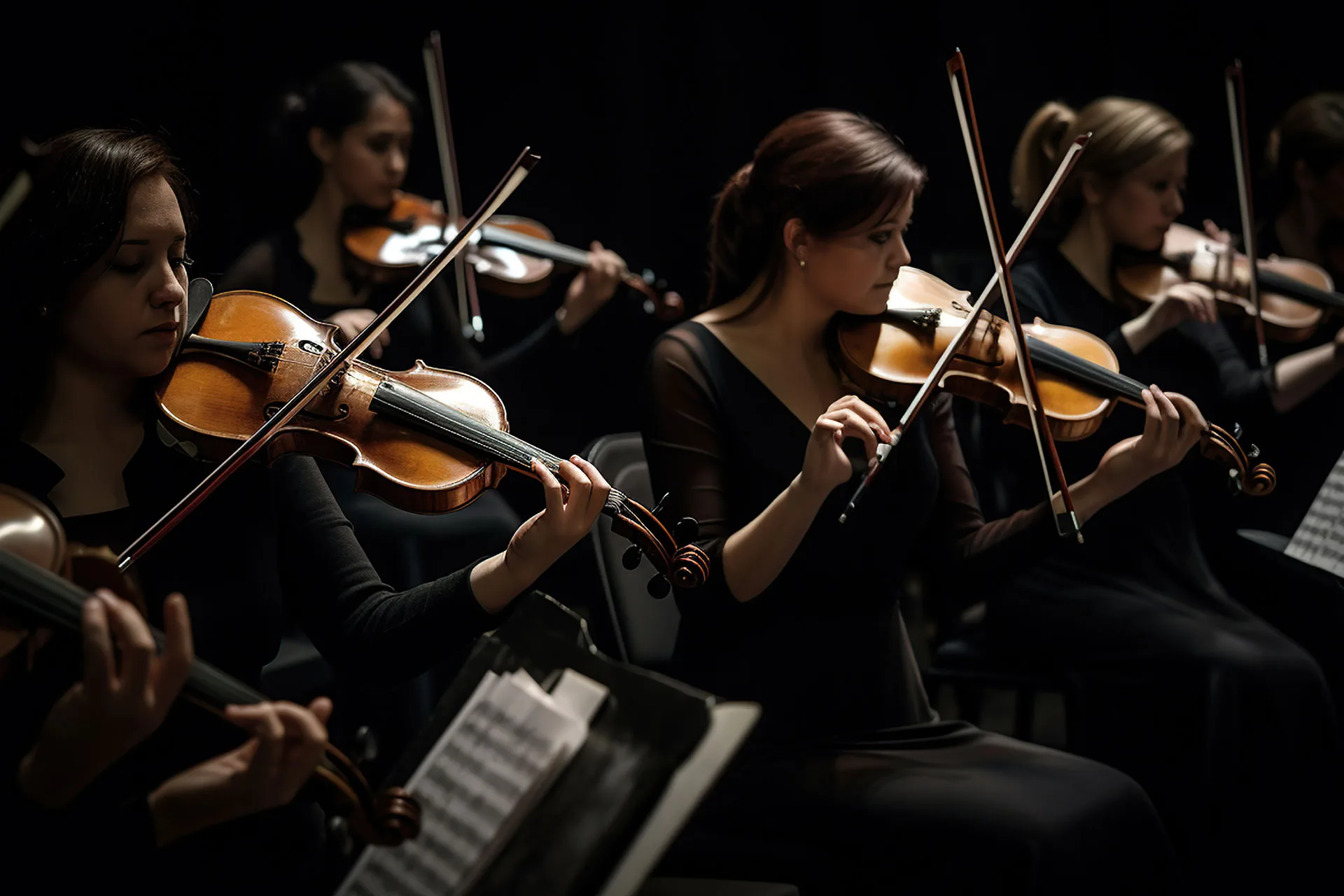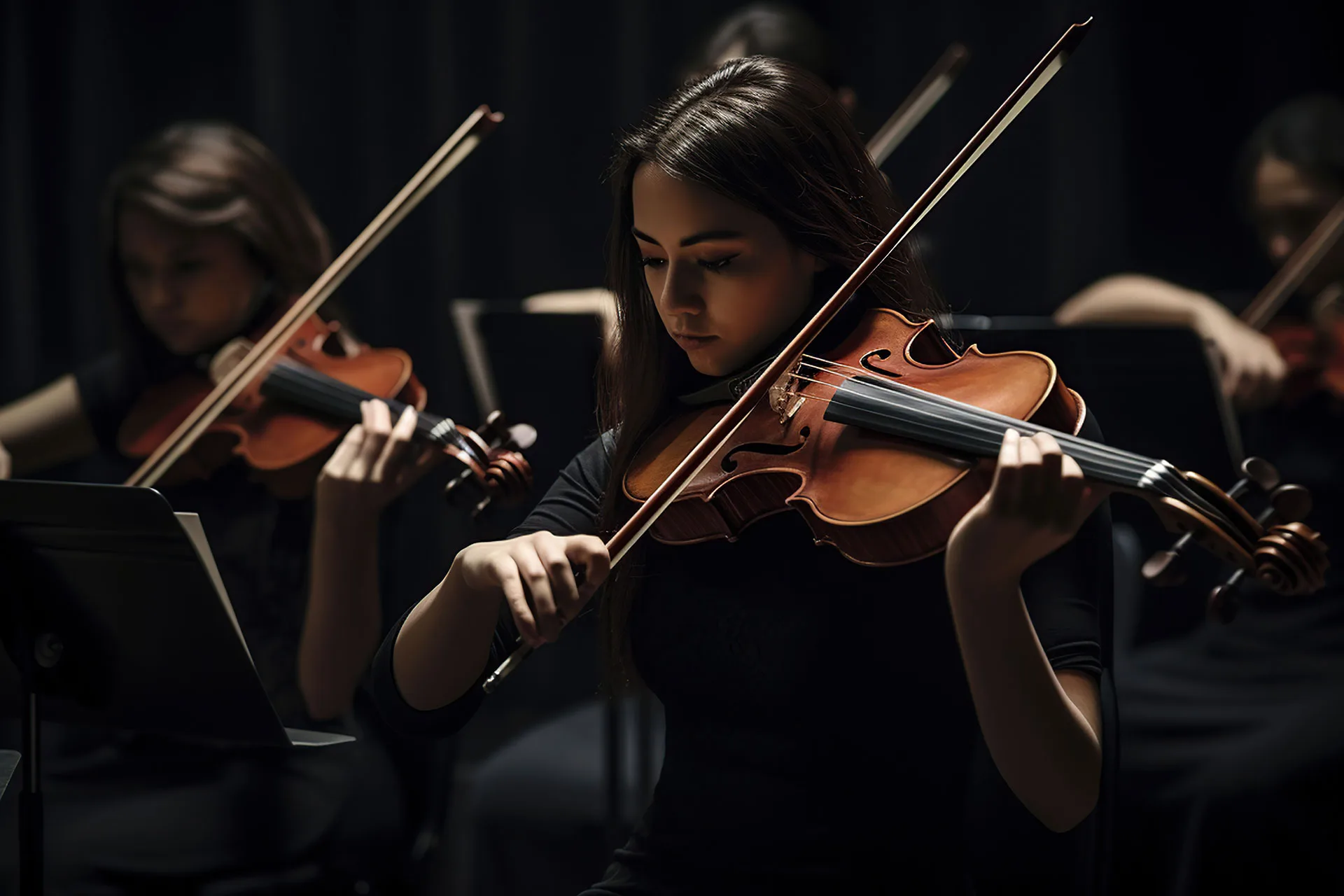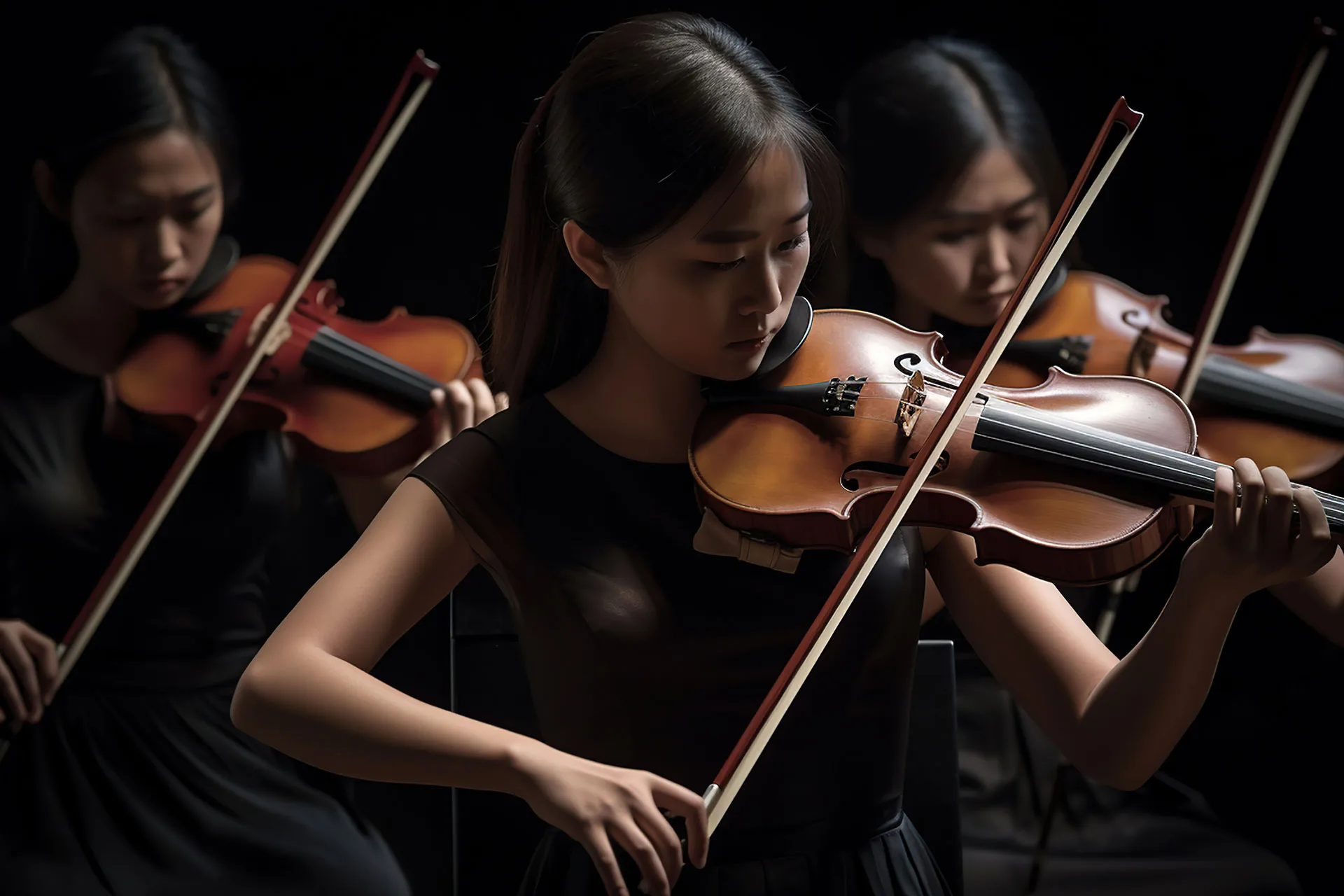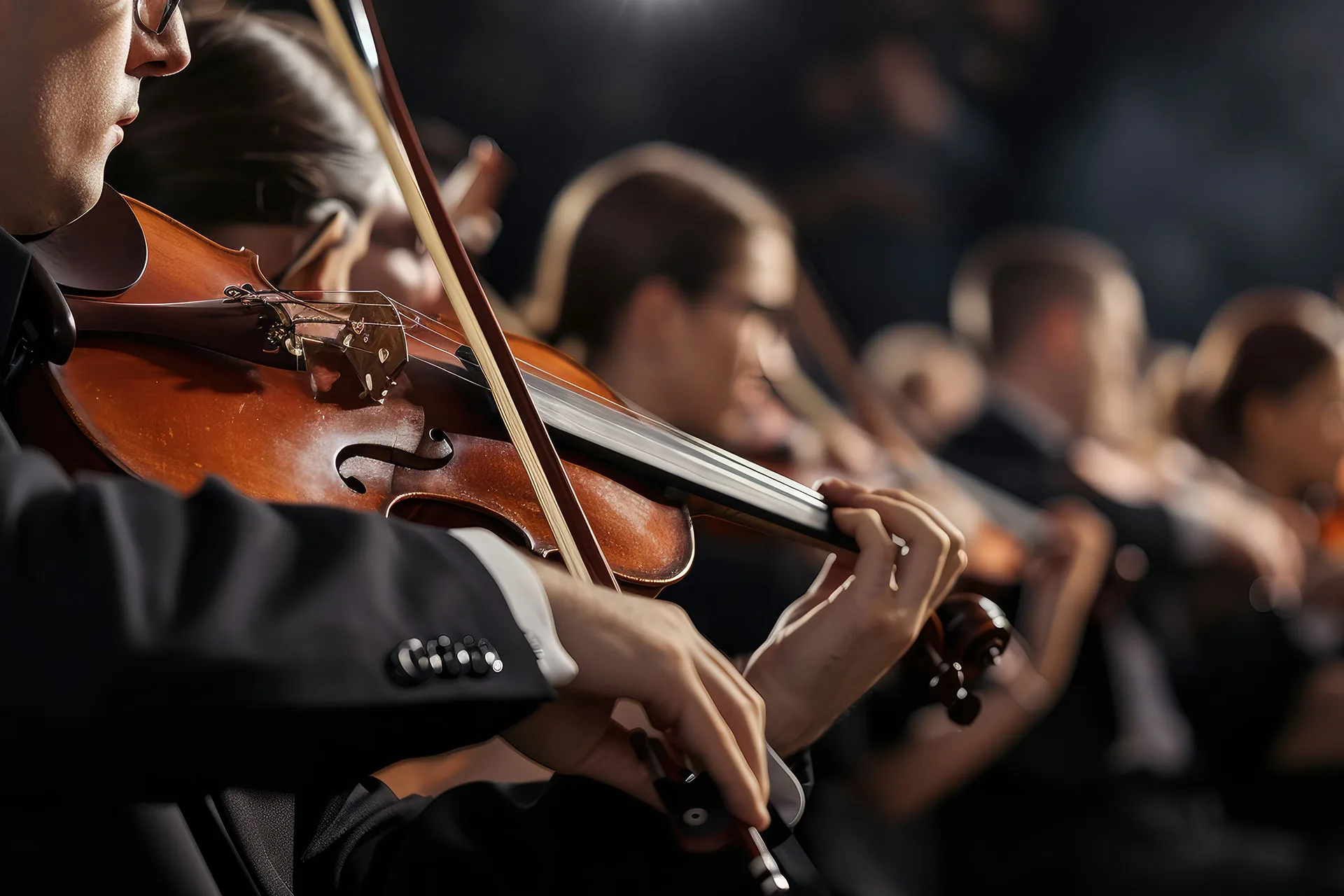Find The Perfect Music Downloads For Autism Campaigns
Music can make or break a campaign. When it comes to raising awareness for autism, the right music is even more essential. Carefully chosen tracks help create an atmosphere that’s empathetic, engaging, and accessible to all.
For creators, especially those in the autism advocacy space, finding the perfect music can be challenging. Not only does it need to be royalty-free, but it should also be sensory-friendly and thoughtfully designed for a wide audience.
Luckily, platforms like TuneCutter make this easier. TuneCutter offers a range of free, high-quality, and royalty-free music that’s perfect for creating impactful autism campaigns. From calming instrumentals to uplifting tracks, you can find everything you need to set the right tone without copyright concerns.
In this guide, we’ll explore the best free music options, show you how to use TuneCutter effectively and share tips for creating impactful, legally sound content. Let’s dive in!
Why Music Matters in Autism Campaigns
Music has a unique role in autism awareness campaigns. It isn’t just about enhancing video content—it’s about creating a connection, conveying empathy, and supporting engagement with diverse audiences, including autistic viewers. Research shows that music can act as a therapeutic bridge, fostering social, emotional, and cognitive development in individuals with autism. Because of this, choosing the right music for autism-related content becomes crucial for creators aiming to build understanding and inclusivity.
For many individuals with autism, music can provide sensory regulation, calming overstimulation or creating a soothing, predictable environment. Certain types of music, especially those with consistent rhythms and gentle tones, help mitigate sensory overload, promoting relaxation and focus. Studies indicate that autistic individuals often benefit from repetitive, predictable patterns in music, which can make them feel more comfortable and connected to the content they’re experiencing. This calming effect can make complex messages about autism acceptance and support easier for audiences to process and appreciate.
Moreover, music encourages emotional expression and social connection, two areas that autistic individuals may find challenging. As music activates areas in the brain responsible for empathy and communication, it facilitates improved social interaction, non-verbal expression, and emotional connection—key goals in many autism awareness campaigns. A study by the University of Montreal found that music interventions could help increase connectivity in brain areas related to social communication, enabling autistic children to better relate to and communicate with others.
Using platforms like TuneCutter for sourcing royalty-free music is ideal for these types of campaigns. TuneCutter provides creators with access to high-quality, calming, and sensory-friendly tracks suited for autism content without the risk of copyright issues. As you build content for autism awareness, TuneCutter’s vast library can offer a range of gentle, uplifting, and ambient music, enhancing your campaign’s impact and ensuring it reaches a wider, neurodiverse audience effectively.
By thoughtfully selecting music, creators can help ensure that autism campaigns resonate deeply and respectfully with audiences, fostering a more inclusive and supportive understanding of autism.
Unique Requirements for Autism Campaign Music
When creating autism awareness content, selecting the right music involves more than just aesthetic appeal. Campaigns for autism awareness need music that is not only emotionally resonant but also considerate of sensory sensitivities. Since autism exists on a broad spectrum, sound sensitivity varies greatly among individuals, making it essential for creators to choose tracks that can accommodate diverse sensory experiences.
Sensitivity to Sound and Volume
Autistic individuals often experience heightened auditory sensitivity, which means that loud, sudden, or high-pitched sounds can lead to discomfort or sensory overload. This is why softer, lower-volume tracks with minimal jarring elements are generally preferable for autism-related content. Studies suggest that music with a consistent tempo and rhythm is often calming for those with sensory processing differences. Therefore, avoiding tracks with abrupt changes in dynamics or intensity is crucial to creating a comfortable viewing experience.
Calming and Predictable Rhythm
Music that offers a predictable rhythm and consistent flow is typically more engaging and less stressful for audiences with autism. Repetitive, looped music patterns are often perceived as calming, helping to create a steady and safe auditory environment. This rhythmically stable music style aligns well with the sensory needs of individuals who may struggle with irregular auditory stimuli.
Emphasis on Instrumental Tracks
Instrumental music is often a go-to choice for autism campaigns, as it avoids the unpredictability of vocals. Lyrics can sometimes detract from the overall message, especially if they introduce complex language or unpredictable patterns. Instrumental music allows creators to establish an emotional tone without overwhelming viewers with auditory information. Additionally, it enables a more focused experience, allowing the visual and verbal elements of a campaign to shine through unimpeded by lyrics.
Mood Selection and Emotional Resonance
The tone of the music should align with the emotional goals of the campaign, such as promoting empathy, compassion, or awareness. For instance, softer genres like ambient, acoustic, or gentle electronic music work well because they evoke calmness and introspection, fostering an empathetic environment. By choosing music that resonates emotionally, content creators can create a message that feels both supportive and approachable for all viewers, including those who may have different ways of processing emotions.
Role of TuneCutter in Autism Campaigns
Platforms like TuneCutter make it simpler to find royalty-free music that meets these unique requirements. With its user-friendly search filters, TuneCutter allows creators to easily access free music that emphasizes calm, low-intensity tracks suited to autism campaigns. Its extensive collection of instrumental and ambient options makes TuneCutter particularly valuable for campaigns aiming to be inclusive of neurodiverse audiences.
Selecting the right music for autism campaigns involves both creativity and sensitivity, and using a reliable resource like TuneCutter simplifies this task, offering high-quality music that enhances the message without overwhelming the viewer.
Royalty-Free Music Essentials
Royalty-free music is a valuable asset for creators, especially those involved in cause-driven campaigns like autism awareness. Unlike other types of licensed music, royalty-free tracks allow you to legally use music in videos, social media, or websites without paying ongoing royalties. For content creators on YouTube or social media, this music option offers both financial flexibility and creative freedom, helping them build meaningful campaigns while avoiding copyright issues.
Royalty-free music provides legal peace of mind by ensuring that the creator has the necessary permissions to use the track in their work. Without this, creators run the risk of receiving copyright claims, demonetization, or even legal challenges. This becomes especially important for autism campaigns, where the goal is often to reach a broad audience and generate awareness without disruptions.
Platforms like TuneCutter provide free, high-quality royalty-free music specifically designed for content creators. This makes TuneCutter particularly advantageous for autism campaigns, as it offers a range of calming and sensory-friendly tracks that avoid the loud, fast, or irregular sounds that can sometimes be challenging for autistic viewers.
Benefits of Royalty-Free Music for Campaigns
Budget-Friendly for Nonprofits and Small Creators: Since many autism awareness campaigns are non-profit or personal projects, royalty-free music provides an affordable way to incorporate high-quality audio. By choosing free tracks, creators can allocate their budgets toward other campaign needs, such as visual production or social media promotion.
Easier Content Distribution: Platforms like YouTube, Instagram, and Facebook have strict copyright policies. Royalty-free music from sources like TuneCutter ensures that your content will be fully licensed for these platforms, so it won’t face limitations or disruptions, which can reduce engagement or the overall impact of your campaign.
Unlimited Use for Consistent Campaigns: Most royalty-free licenses allow creators to use the track repeatedly across different projects. This means an autism campaign can establish a consistent musical theme across all content, strengthening brand identity and making the message more memorable.
Types of Licenses Available in Royalty-Free Music
Different royalty-free music platforms may offer various licensing terms, so it’s crucial for creators to understand the basics. TuneCutter, for example, offers clear licensing on its free music downloads, making it easy to check if a track can be used commercially or shared widely.
Public Domain: Some tracks may be entirely free to use without restriction because they are in the public domain. These are ideal for creators looking to share content widely without worrying about copyright.
Creative Commons Licenses: Creative Commons licenses are common on many royalty-free music platforms, though they vary in terms of restrictions. While some licenses allow free use with attribution, others limit commercial use. Creators should confirm that the license matches their campaign needs before selecting a track.
Custom Licenses: Some platforms, including TuneCutter, may offer unique licensing agreements on certain tracks, allowing more flexibility or commercial use with attribution. TuneCutter’s clear licensing documentation is a standout feature for content creators who need straightforward guidelines to avoid copyright complications.
Royalty-free music offers creators a way to integrate engaging, legally compliant audio into autism campaigns without ongoing fees or restrictive permissions. With TuneCutter’s extensive royalty-free library, creating sensory-friendly, impactful content becomes not only achievable but streamlined, ensuring every campaign element aligns with both creative and legal standards.
TuneCutter: Go-To for Royalty-Free Music
For content creators focused on autism awareness campaigns, TuneCutter has become an invaluable resource for royalty-free music. It provides a vast selection of music that fits both creative and sensory requirements for inclusive content. What sets TuneCutter apart is its commitment to high-quality audio tracks that are entirely free to use, making it an ideal platform for campaign creators seeking powerful, legally safe music that supports autism advocacy.
Why TuneCutter Is Ideal for Autism Campaigns
Wide Range of Calming Tracks: TuneCutter’s music library includes genres that align well with the sensory needs of autism campaigns, such as ambient, acoustic, and gentle electronic tracks. These styles offer predictable, repetitive sounds that avoid jarring auditory shifts, which can be overstimulating for viewers with sensory sensitivities.
Easy Search and Filter Options: TuneCutter’s user-friendly interface enables creators to filter by mood, genre, and intensity. This is especially helpful for autism campaigns that require precise soundscapes—such as calming or neutral music—that won’t overwhelm or distract.
Simple Licensing Terms: TuneCutter provides clear and concise licensing terms, allowing content creators to use music with confidence. For creators managing non-profit projects or campaigns, this level of transparency means they can focus on impact without navigating complex legal restrictions.
Free Downloads for Unlimited Use: Unlike many royalty-free music platforms, TuneCutter allows unlimited downloads of free tracks, making it accessible to smaller creators or non-profit organizations with limited budgets. This flexibility enables creators to test and repeat favorite tracks across various campaign materials, creating a cohesive auditory identity for their autism content.
Commercial Use Support: For creators on monetized platforms like YouTube, TuneCutter’s library includes options for commercial use, so that campaigns can be shared, monetized, and widely distributed without running into copyright issues. This feature is crucial for autism campaigns aimed at reaching broad audiences on social media platforms and beyond.
How TuneCutter Enhances Autism Awareness Content
By providing high-quality tracks tailored to the needs of creators in inclusive and accessible spaces, TuneCutter not only meets the technical and legal needs of autism awareness campaigns but also helps amplify their emotional resonance. For campaigns aiming to be both sensory-friendly and impactful, TuneCutter’s versatile library of royalty-free music offers an excellent combination of accessibility, variety, and ease of use.
With TuneCutter, content creators can readily access a library of suitable music, ensuring that their autism awareness campaigns are not only legally compliant but also thoughtfully crafted for an inclusive and empathetic viewing experience.
Top Features of TuneCutter for Autism Campaigns
TuneCutter stands out as a comprehensive platform for creators seeking high-quality, royalty-free music tailored for sensitive topics like autism awareness. Here are some of the top features that make TuneCutter a top choice for autism campaigns:
Diverse Music Genres for Various Campaign Needs
One of TuneCutter’s strengths lies in its broad selection of genres, including ambient, acoustic, classical, and instrumental options. Each of these genres is ideal for campaigns focused on autism awareness, as they offer the calming and predictable soundscapes that are most effective for engaging neurodiverse audiences. For example, ambient tracks allow for a seamless background sound that supports sensory-friendly content, while gentle acoustic music can convey empathy and understanding without being distracting.
User-Friendly Search and Filtering Options
Creators can save time and simplify music selection with TuneCutter’s search and filtering tools. TuneCutter’s intuitive interface allows users to filter by mood, intensity, and genre. This flexibility is particularly beneficial for autism-related content, where mood and intensity are key to ensuring accessibility. Campaign creators can effortlessly locate tracks that are specifically calming or uplifting, which can make a positive emotional impact while remaining sensitive to viewers with heightened sound sensitivity.
Sensory-Friendly Audio with Consistent Rhythm and Tone
Sensory-friendly audio is a priority for autism awareness campaigns, and TuneCutter’s library features many tracks that fit this need. For instance, instrumental tracks on TuneCutter avoid sudden shifts in volume and pitch, creating a comfortable auditory experience. These characteristics help in maintaining engagement without causing overstimulation, which is crucial for an inclusive autism campaign.
Free Downloads with Clear Licensing for Hassle-Free Use
TuneCutter’s licensing terms are straightforward, allowing creators to download music with confidence that their content will remain compliant with copyright laws. For nonprofit autism campaigns or creators on limited budgets, TuneCutter’s free tracks provide both quality and peace of mind. This ease of licensing is especially valuable for creators working on monetized platforms or producing content with widespread distribution goals.
Unlimited Reuse for Consistent Branding
Many of TuneCutter’s tracks are available for unlimited reuse, which is an asset for campaigns needing cohesive branding across multiple channels. Autism campaigns benefit from consistent auditory branding, as repeated exposure to familiar music can help reinforce the campaign’s message and make it more memorable. With TuneCutter’s unlimited reuse policy on free downloads, creators can establish a steady campaign identity without additional costs.
Professional-Quality Audio for Enhanced Impact
TuneCutter’s library of professional-quality audio tracks allows creators to elevate their autism awareness content. By offering tracks that are well-produced and optimized for various media formats, TuneCutter enables campaigns to make a polished impression. High-quality audio can significantly impact audience engagement and credibility, especially for cause-based content like autism awareness.
These TuneCutter features make it a top choice for creating respectful, impactful, and legally sound autism campaigns. The combination of sensory-friendly options, easy licensing, and free high-quality downloads provides a powerful toolkit for content creators dedicated to autism advocacy.
Key Music Types for Autism Campaigns
Selecting the right type of music is critical for autism awareness campaigns, as it directly impacts the way audiences connect with and respond to the content. For creators aiming to communicate empathy, inclusivity, and sensory sensitivity, certain music genres and types are particularly effective. Here are some ideal music styles for autism campaigns, with a special emphasis on those available from TuneCutter.
Instrumental and Acoustic Tracks for a Calming Effect
Instrumental music is often recommended for autism-related content because it eliminates the unpredictability of vocals. Acoustic tracks, with their gentle and organic sounds, provide a natural, calming atmosphere. The repetitive and soothing nature of instrumental music helps reduce anxiety, creating an accessible experience for viewers who may be sensitive to loud or jarring sounds.
For instance, TuneCutter’s selection of acoustic and instrumental tracks offers creators an extensive range of background music that is both emotionally resonant and sensory-friendly. Tracks featuring piano or soft guitar often work well for autism campaigns due to their warm, calming tones that subtly support the content’s message.
Ambient Music for Gentle Background Support
Ambient music, characterized by atmospheric sounds and minimal structure, is particularly effective for autism awareness videos or presentations. The light, consistent soundscapes found in ambient music provide a sense of continuity without overpowering other elements in the content. This type of music supports an immersive viewing experience, allowing viewers to stay engaged without sensory interruptions.
TuneCutter’s library includes various ambient tracks ideal for campaign creators. Many of these tracks incorporate soft electronic tones, low beats, and extended harmonics, creating a balanced background that enhances autism-related content without causing sensory overload.
Nature-Inspired Sounds to Promote Calmness and Focus
Nature-inspired music, such as tracks featuring sounds of water, birds, or wind, can evoke a feeling of peace and relaxation, making it ideal for campaigns about autism. This type of music is grounding and familiar, offering a non-intrusive backdrop that enhances visual content. Studies suggest that nature sounds can lower stress and promote relaxation, benefits that are particularly valuable for creating content accessible to neurodiverse audiences.
TuneCutter provides various nature-inspired soundscapes that add a layer of calm to any project. These tracks can help create an environment that encourages empathy and calmness, aligning well with the goals of autism awareness content.
Soft Electronic and Lo-Fi Beats for a Modern Yet Sensory-Friendly Touch
For creators aiming to reach younger audiences or add a contemporary edge to their content, soft electronic and lo-fi beats can be effective. These styles incorporate mellow, repetitive beats that are sensory-friendly while also providing a modern feel to the campaign. Lo-fi music, often used in background videos and streams, has a rhythmic yet relaxed quality, ideal for maintaining engagement without overwhelming viewers.
TuneCutter’s electronic and lo-fi options feature subdued bass lines, smooth tempos, and minimal dynamic shifts, making them an excellent choice for autism-related campaigns that aim for a relaxed, inviting atmosphere.
Uplifting Melodies for a Positive, Hopeful Message
For campaigns focused on the positive aspects of autism acceptance and advocacy, uplifting instrumental melodies provide an optimistic tone. These tracks, often including soft strings or light percussion, inspire a sense of hope and unity. This is especially useful for content that encourages support, awareness, and inclusivity.
TuneCutter offers a range of uplifting instrumental tracks that are both subtle and emotionally resonant. These melodies can reinforce campaign messages without causing distractions, allowing viewers to stay focused on the visuals and the message of the campaign.
Choosing the right music type for autism awareness content allows creators to communicate messages in a way that is accessible, respectful, and emotionally engaging. With TuneCutter’s diverse range of royalty-free music, content creators have access to sensory-friendly tracks that support their mission to foster understanding and acceptance in autism campaigns.
How to Find the Best Tracks on TuneCutter
With a mission to simplify the search for royalty-free music, TuneCutter has designed its platform with features that make finding the perfect track for autism campaigns straightforward and intuitive. Using a few key strategies, creators can quickly locate music that aligns with their project’s tone, audience needs, and campaign goals. Below are some practical tips for navigating TuneCutter’s vast library effectively.
1. Use Specific Keywords for Mood and Sensory Needs
To quickly access the most suitable music, TuneCutter allows creators to search by mood, genre, and tone. For autism campaigns, using keywords like “calm,” “uplifting,” or “ambient” can streamline results to music tracks that are gentle and sensory-friendly. This helps creators skip over intense genres and land directly on tracks that are more appropriate for sensitive audiences.
If the campaign has a particular theme, like hope or empowerment, incorporating terms such as “positive,” “soothing,” or “relaxed” into the search filters can yield tracks that evoke the desired emotional response. Using specific sensory-friendly tags can be especially helpful for campaigns that aim to minimize sensory overload while maintaining a compelling audio presence.
2. Explore Recommended Collections for Autism Awareness
TuneCutter periodically curates themed collections that are tailored to certain projects or moods. Campaigns centered on awareness, empathy, and understanding often find these curated collections invaluable. Look for collections geared toward “empathy,” “awareness,” or “advocacy,” as they are likely to contain tracks suited for campaigns on social issues, including autism.
These collections save creators time by gathering together music that has been pre-selected for its emotional impact, accessibility, and thematic relevance, ensuring campaign creators can find resonant tracks without a prolonged search.
3. Filter by Instrumental Only for a Clean, Focused Sound
Instrumental tracks are often recommended for autism awareness campaigns, as they avoid the unpredictability of vocals and allow for a smooth, continuous auditory experience. TuneCutter provides a convenient filter that enables users to search for instrumental-only tracks. This is particularly beneficial for creators who want to enhance their visuals without overpowering their message or causing sensory strain on the audience.
By selecting this filter, creators can avoid lyrical music and instead focus on music that enhances the campaign without distracting or overstimulating viewers.
4. Check Track Length and Looping Options for Versatile Usage
Another useful TuneCutter feature is the ability to filter tracks by length. Short loops can be used as background soundscapes for short social media clips, while longer tracks work well for in-depth campaign videos or website landing pages. If your campaign involves looping background music, select tracks designed to loop seamlessly; TuneCutter’s looping options provide this flexibility, enabling creators to create a consistent sound environment.
Selecting a track that suits the intended content length is essential for maintaining a cohesive experience, particularly when targeting neurodiverse audiences who may benefit from consistency in auditory patterns.
5. Use Download Previews to Test Tracks with Visuals
One of TuneCutter’s standout features is its download preview option. This allows creators to test the music alongside their visuals before finalizing their choice, ensuring that the track complements the campaign’s tone and message. Testing with visuals is especially helpful for autism awareness content, as it allows creators to gauge how well the music integrates with other sensory elements.
For instance, a calm piano piece might enhance a visual sequence depicting empathy and support, while an ambient track could reinforce a message of understanding and acceptance. Previewing this way helps creators confidently select music that balances both sensory sensitivity and emotional impact.
6. Review Licensing Information to Ensure Campaign Compliance
Although TuneCutter provides royalty-free music, each track has specific licensing terms that dictate how it can be used. TuneCutter makes it easy to check this information, so creators can ensure that their campaign complies with licensing standards, especially if the content will be distributed across multiple platforms or monetized.
For nonprofit autism awareness campaigns, this transparency is invaluable. TuneCutter’s clear licensing structure helps creators understand if a track requires attribution, if it can be monetized, or if it has any other usage limitations, so they can avoid potential copyright issues and focus fully on creating impactful content.
By leveraging TuneCutter’s search, filtering, and preview options, content creators can effectively locate music that meets both the creative and sensory needs of autism campaigns. This structured approach ensures that every track chosen enhances the campaign’s message while respecting the sensory sensitivities of the intended audience.
Recommended Tracks on TuneCutter for Autism Awareness
When creating impactful autism awareness campaigns, choosing the right music can help convey messages of empathy, support, and understanding. TuneCutter offers a range of royalty-free tracks that are well-suited to these themes, providing sensory-friendly and emotionally resonant options. Here are a few types of recommended tracks on TuneCutter that cater specifically to the needs of autism campaigns, along with examples of their ideal use:
1. Gentle Piano Melodies for Calming Backgrounds
Soft piano music has a gentle quality that can create a serene backdrop, making it perfect for videos highlighting stories, personal journeys, or reflections on autism. Piano melodies that use consistent, gentle tempos and soft dynamics provide a calm atmosphere that appeals to audiences sensitive to louder or unpredictable sounds. These tracks often work well in introductory segments or during narration, where they support the content without drawing focus.
Example Track: “Quiet Reflections” – A soothing piano piece with a simple, repetitive melody that’s ideal for setting a calm and introspective tone.
2. Ambient Soundscapes for Supportive Narratives
Ambient music can create an atmospheric background that maintains a subtle presence, allowing viewers to focus on the visual and verbal content. This style, often characterized by minimalistic synths and layered sound effects, is excellent for content meant to educate or raise awareness without overwhelming the viewer. Ambient soundscapes help foster a sense of openness and empathy, supporting narratives focused on understanding and inclusivity.
Example Track: “Echoes of Compassion” – An ambient track featuring soft synths and light textures, which creates an immersive atmosphere suited to sensitive topics.
3. Acoustic Guitar Tracks for Empathetic Messaging
Acoustic guitar music, with its warm and organic tones, is a natural choice for campaigns that emphasize personal connection and support. This genre is particularly effective for segments that discuss the experiences of individuals and families affected by autism. Acoustic tracks that are slow-paced with steady, soft strumming convey a sense of intimacy and support, enhancing the viewer’s connection to the content.
Example Track: “Shared Journey” – A gentle acoustic guitar piece with an uplifting yet soft melody, perfect for segments that highlight community support or personal stories.
4. Nature-Inspired Tracks for Relaxed and Inclusive Themes
Nature-inspired tracks, featuring sounds like birds chirping, water flowing, or gentle wind, can create a tranquil and grounding atmosphere. This type of music is ideal for campaigns that aim to create an inclusive and calming experience, such as relaxation sessions, mindfulness exercises, or sensory-friendly virtual environments. Nature sounds promote relaxation and can help make autism campaign content more accessible to neurodiverse audiences by offering familiar, soothing auditory elements.
Example Track: “Whispers of Nature” – A nature-inspired soundscape with soft bird songs and gentle water sounds, excellent for relaxation-focused content or nature-based visual elements.
5. Hopeful Instrumental Tracks for Inspiring Call-to-Actions
For segments with a strong call to action, such as encouraging donations, support, or community involvement, instrumental tracks with an uplifting tone work well. Light strings, subtle percussion, and melodic build-ups can create a hopeful atmosphere that encourages positive action. These tracks help elevate the campaign message, inspiring viewers to participate in advocacy, support autism-friendly programs, or get involved in community initiatives.
Example Track: “Path to Hope” – A motivating instrumental featuring soft strings and light percussion, suitable for closing segments or call-to-action messages.
6. Lo-Fi Beats for a Relaxed, Modern Aesthetic
Lo-fi music, known for its laid-back beats and mellow vibe, can appeal to younger audiences or create a relaxed, contemporary feel. These tracks are ideal for informal, friendly segments, like social media content or casual storytelling formats, where the aim is to foster a sense of community and accessibility without creating high sensory demands. Lo-fi beats provide a modern touch while remaining gentle and repetitive, supporting autism content in a style that’s both engaging and approachable.
Example Track: “Calm Beats” – A lo-fi track with soft percussion and mellow rhythms, suited for informal campaign segments or background music in social media posts.
By choosing these specific types of tracks on TuneCutter, content creators can enhance the message of their autism campaigns while respecting sensory sensitivities and creating a supportive, inclusive viewing experience.



